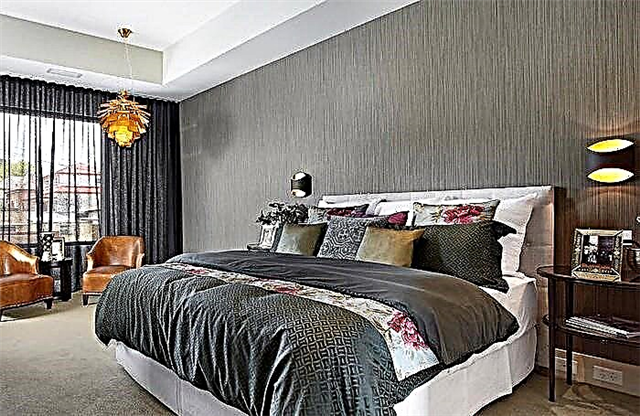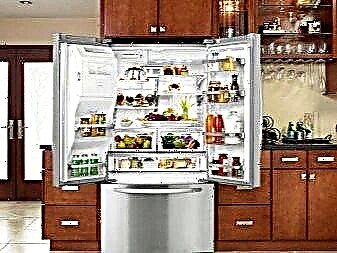Fencing of sites is becoming an increasingly popular and sought-after solution to decorate the facade and protect yourself from the outside world, thereby creating some kind of individuality and security. Various options for materials with which you can build a beautiful fence, today is striking in its diversity.
A wide range allows you to make a design of any design, shape, color, apply various ornaments and more. A great option, which is very cheap and durable, is a natural wood fence.
What is the fence board
In order to build a fence, builders prefer special varieties of wood and the boards themselves. It is a special fence that can withstand severe weather conditions, will meet the requirements of appearance and will be able to serve a long service with proper handling of the surface of your fence.
The fence of the boards is made of wood that is able to withstand moisture, has sufficient strength, which will be enough to withstand wind pressure and various external influences. Also, fence boards must withstand the appearance of various rodents, which can significantly impair quality.
Builders, erecting a fence from boards, prefer coniferous wood. Commonly used trees are spruce, pine, larch, and the needles themselves. All of them have the necessary level of quality, and can resist any adverse conditions, while maintaining their attractive appearance for a long time.
For example, larch is able to repel attacks of any midges and rodents, and practically does not give in to their influence, which is very good in those places where there are a lot of them.
Also, the fence board is divided into two types, which will directly affect the price and appearance. Separation occurs by the method of processing wood, edged and not edged. They are also called planed and not planed, respectively.
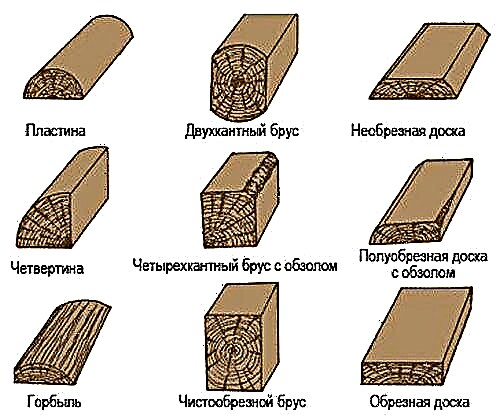
In the first case, processing takes place by cutting the fence board from all sides to give it a neat and even appearance. In the second processing method, trimming occurs only on the front and back sides, the edges remain untouched and can have a different shape and appearance.
Choosing wood, and then what will be the fence, it is necessary to clarify all their parameters. This includes material moisture, strength, check for damage and various midges. Only after this you should proceed to purchase, as the quality of the material will directly affect the longevity of your fence. Try not to miss a single detail, and make a careful and thoughtful choice.
We select the price
The price issue becomes especially acute in the case when it is required to make a high-quality durable fence, and at the same time save without overpaying extra money. It should be accurately calculated how strong the fence should be, since the thickness of the boards will directly depend on the final price of the structure.
Decide what width and height each part will be, as well as what the gap will be between them. All these indicators will directly affect the price of the design of your fence.
The next step is to decide whether the board will be edged or not. The first option will be about twenty percent more expensive, but then the appearance, quality and ease of construction will be significantly higher. Also at the bases you can find both materials with natural humidity and dried in special drying chambers. Artificially dried boards will cost significantly more, the price can be up to fifty percent.
It is worth noting that the less moisture a board fence has, the longer its life will be. So if you buy dry boards and process them properly, then the service life should fully compensate for the overpriced initial price, moreover, various antiseptics, primers and paints will better cover a dry surface and can penetrate deeper into the wood.
At construction sites and sawmills, wood is sold in cubic meters. The cost of one cubic meter of spruce is in the region of five thousand rubles, the pine will cost about four thousand. If you choose artificially dried, then the price will be about seven and six thousand rubles, respectively. The prices shown are for edged boards, if you decide to take not edged, then you can safely lower the hay, as previously indicated, by twenty percent.
Fence board - appearance
It is not necessary to focus on the appearance, as you won’t be able to select it precisely, each wood is unique and there is no way to compare them.
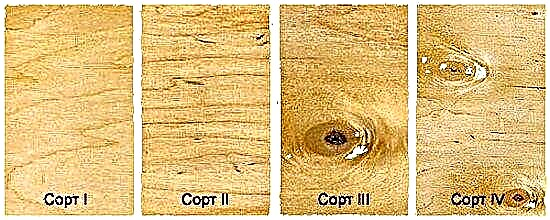
Even if you do not paint the fence, but decide to cover it with varnish, then the natural texture will still have a very attractive and presentable appearance.
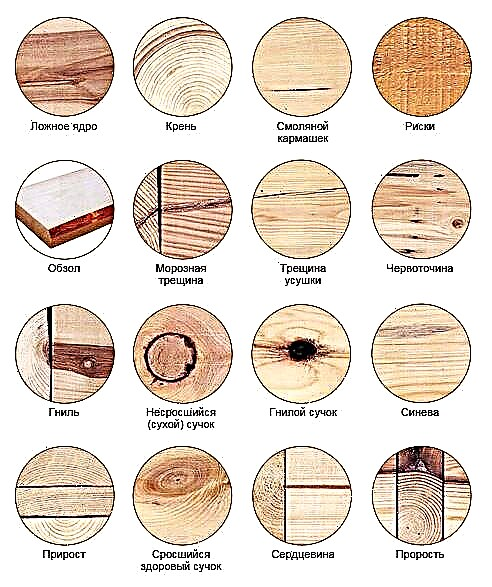
Flaws and defects of wood
The only thing you should focus on is the choice of a planed or non-planed board, these indicators will significantly affect the appearance. Also, when buying, it is advisable to check the evenness of the boards, this is especially important when the fence is horizontal, on it, bumps will be especially visible.
Tips and tricks from experts
The board on the fence must be carefully crafted and protected from moisture and rodents. This should be done a few days before installation so that the processing means can soak into the wood and protect it reliably.
Since the surface will be constantly affected by moisture, wind, sun and temperature, before painting it is necessary to process the fences from the boards with a primer, and then apply the paint. So, the adhesion quality and durability of the paint will be significantly higher. When choosing horizontal fences from the board, it is necessary to select the most even boards so that the flaws are less noticeable.
Appearance
Fence boards can be bought both wholesale and retail, and their prices are relatively low. Qualitative or not, you can determine by appearance. Packaging polyethylene should be transparent, if not, it is better not to purchase wood. Inspecting lumber, you need to pay attention to the following:
- if there is a drop of moisture on the polyethylene inside, this means that the wood is damp, and if dried over time, it may deform,
- fences are usually made of planed boards, which should not have roughnesses, chips, cracks on their surface,
- sometimes there are curvatures on them, the so-called screw, such lumber is also not suitable. It is advisable to choose perfectly even,
- do not take lumber knotted or with fallen knots,
- when touched, the surface of the material should be dry,
- mold smell should not be felt - this means that the wood has already begun to rot,
- unnatural color and the presence of uncharacteristic spots should alert.
The presence of these signs means that the quality of lumber is not the best.
Basic material requirements
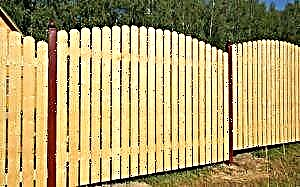
Edged Lumber Fence
The best species of wood for fencing are coniferous - spruce, pine, larch. They have a fairly low cost, are durable and resistant to weather conditions. When choosing wood, one should take into account temperature differences, frosts in winter and heat in summer, heavy rains in spring and autumn.
The best in this regard is larch. It is strong, durable, almost does not rot and is less prone to spoilage than others. With additional impregnation with special means, its durability increases.
Larch wood has a lower moisture content compared to wood of other species. Therefore, lumber from it does not deform when it dries or moistens. If the developer does not have enough funds or the strength of the fence is not very important, larch wood can be replaced with pine. Sometimes fences are made from other tree species.
Features of edged and unedged boards
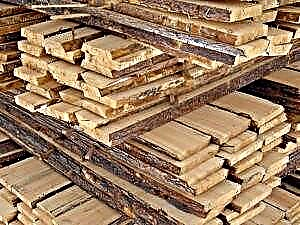
Unedged timber for construction of fences
Edged (planed) material refers to lumber of the first grade. It is processed on all four sides. Unedged (not planed) is processed only on two sides, on its sides there is a bark. This is lumber of 2-4 grades.
Unedged has its advantages - low price and ease of installation. If you need to build a long fence, more often choose it. The wood texture is clearly visible in a planed tree, which looks very harmonious with wooden houses. With a little imagination, you can create a fence from them that will attract attention with originality.
Most often, unedged boards are made of coniferous trees, which guarantees them strength and longevity. Mostly they are sold wet. They require additional drying, otherwise in the future, during drying, they can change their shape.
The advantages of edged boards - in its aesthetic appearance. Material for the manufacture of high-quality pine. It is durable and environmentally friendly, therefore planed boards are durable and resistant to rot. They have a smooth surface, which facilitates the processing, impregnation and painting. The price of edged lumber is higher than unedged.
A board with a semicircular profile is an interesting option for creating a unique wooden structure. However, it costs more than edged.
Types of finished fence boards
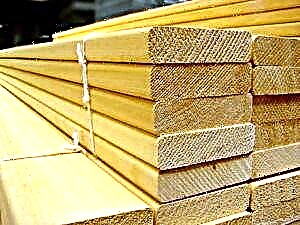
Ready for the construction of the fence material
The most convenient material for work is a finished fence board. It has normal humidity, is well processed and cut to size. True, the fence will cost several times more.
The main types of boards used for fencing are:
- Terraced. Darling, but the fence from it looks stylish, it is more attractive than all previous options. Installation is complicated and it requires special care.
- Specially aged. Material made of wood, aged according to the developed technology in the country style. Widely used in the fences of village houses.
- Brushed. Unique fences are made from it. The process involves removing part of the top layer of wood with specially designed brushes. Ultimately, the original texture of the tree opens completely. Treated with special substances, the material becomes durable and resistant to high humidity and mechanical damage.
- White edged. It looks very nice against the background of modern houses. Neat buildings can be compared with European fences for the design of a personal landscape. And all this does not require huge cash investments.
- Decorative. The board is able to make a work of art from an ordinary picket fence. Openwork design give patterns made on the end cuts.
Before starting work, any material must adapt to the surrounding environment. Before use, it is covered with a special protective agent. This will need to be repeated every 1-2 years.
When choosing boards, you should pay attention to their thickness. It is from 16 to 32 mm. It is undesirable to take thick ones - this is an extra cost. But too thin will not work. They will bend, break, and ultimately will not last long. The optimal thickness is 20−25 mm.
How to calculate the amount of material
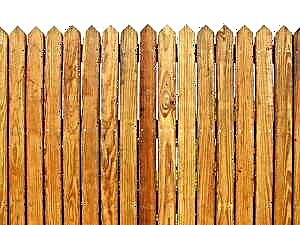
To calculate the material you need to determine the type of fence
Buying lumber for the construction of the fence, I do not want to overpay and buy too much. Therefore, it is advisable to at least approximately calculate how many boards are needed. This amount will vary depending on the type of fence.
In one embodiment, it is possible to build a fence, leaving gaps between the boards, in another - to dock them close to each other or to nail lap on top of each other. Most often, they make a normal fence when the tree is snug against each other. It is simple in calculating, manufacturing and copes with the security function perfectly.
First you need to decide on the height. The optimum height is 2 m, such a fence completely hides the area from prying eyes. Then you need to take two or four meter boards so that there is less waste.
Calculating the amount is pretty simple. We need to measure the length of the fence, for example, it is 100 m or 10,000 cm, the width of the board is 10 cm. The calculation is simple: 10,000 divided by 10, it turns out 1000. For a 100 m long fence you will need 1000 10 cm wide boards. Just in case, it’s better to take the boards A bit more.
If you plan to fence at intervals, then the width of the gap should be added to the width of the board. For example, it is 10 cm. The width of the board plus the width of the gap will be 20 cm. The number of boards is 10000/20 = 500. It turns out that such a fence boards will need half as much.
However, the price in stores is indicated per cubic meter of lumber. The necessary cubic capacity is also easy to calculate. To do this, multiply the thickness, length and width of the board and multiply the resulting number by the number of boards. The required number of cubic meters for construction will be released.
The number of boards per cubic meter is considered as follows: one cubic meter is divided by the volume of the board. Volume is the multiplied thickness, length and width. Using such simple calculations, you can determine how many boards in pieces and cubic meters are needed to build a fence.
A wide range of lumber allows you to make a fence in any style and for every taste. However, the main functions of the fence are security and protection. Therefore, it is desirable to choose lumber for the fence, focusing on the quality, strength and durability of wood.
The main types of fences from boards
Choosing the type of wooden fence is limited by budget. Having worked well on the design, you can create an exclusive masterpiece or dwell on the standard solution of the fence. The developed options will be distinguished by the height of the structure, the frequency of shtaketin placement and the quality of building materials.
- a solid wooden fence consists of planks tightly joined together,
- shtaketny. It implies fastening boards with gaps between the slats,
- chess in horizontal execution. Lumber is attached horizontally to the guide plate in a checkerboard pattern, with a gap of 1/3 of the height of the previous shtaketin,
- chess vertical. Installation of the beams takes place in a checkerboard pattern, only already in the vertical direction,
- ladder. The fencing board is distributed perpendicular to the veins, with a slight overlap on each other.
Before embarking on the construction, start preparing all the necessary parts and raw materials: poles, logs, pickets.
Fence boards for construction
To build a quality wooden fence with your own hands, due attention should be given to the choice of lumber. Fencing boards come in several forms:
- planed board for the fence. Universal raw material from which you can build a standard enclosing element of any kind. In terms of reliability, of course, a fence made of planed boards is inferior to brick and metal counterparts, but it will not take you a lot of time and money,
- decorative wooden shtaket. The individuality of the building material is given by the machined end edge and the edge on the sides of the board. Rounded edge racks are easier and safer to mount,
- unedged timber. They will maximize the use of the foundation for construction, with virtually no waste.It will be the perfect complement to a country house in ethnic style or country. Ease of installation, aesthetic appearance, loyal price make the material used attractive for the construction of fencing,
- the aged board or the effect of “artificial aging” is achieved by custom wood finishing - brushing. Using a brush, the top layer of fibers is removed. Manipulation allows you to highlight the relief pattern of the resinous part, emphasize the natural texture of the tree, turning an ordinary wooden board into a durable building material.
To extend the life of the wooden fence, reduce the impact of external environmental factors, use antiseptic preparations - antiseptic, wood paint, wax, varnish, and azure.
In the construction of the fence can not do without cement and sand, a mixture of which will help to reliably fix concrete poles. Using high-quality cement, you will increase the reliability and operational period of construction.
Useful know-how
Modern technologies have made possible the use of polymer and terrace boards. Planks made of plastic - durable, not affected by climate and insects. The cost of products is much lower than wooden, there is no need for painting and maintenance, but such a fence does not always look appropriate.
An expensive, stylish and durable deck board requires building skills. Wood is preliminarily prepared by treatment with impregnations, and after 2 years the treatment is repeated.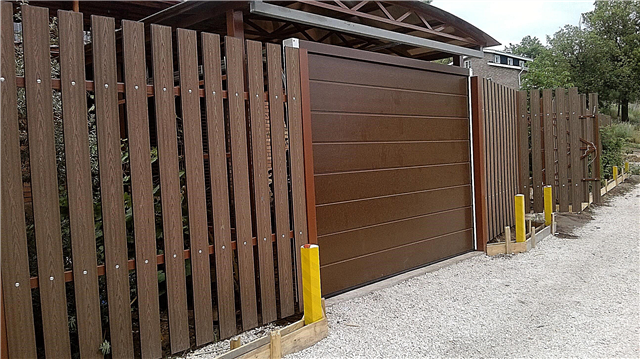
We select a tree for the future fencing of the site
The range of material on the fence is produced by various manufacturers. By choosing the right lumber, you get the perfect accent in the landscape.
The choice of wood is based on the purpose of the fence. For seasonal fence, use blanks of alder, ash or birch. Is there a need for a strong fence that will stand for many years and serve as “faith and truth”? We recommend using a board made of pine, aspen or larch.
Consider the advantages of wood:
- a pine board is ideal for the construction of a protective shield. The material needs special care, regular treatment with antiseptic drugs, protection from insects and moisture concentration.
- aspen board is a strong raw material of the enclosing element. Humidity is not afraid of lumber, it has protective properties against damage by insects, is not subject to split and deformation during operation.
- larch board. Of all these options, this is the most durable. Deciduous wood fences are distinguished by their durability, which have been pleasing to the eye for decades.
It is possible to achieve the stability of the fence if high-quality tree species are used for its construction.
Fence Design Options
A wooden fence does not require design skills. The main thing is to choose a design and make it yourself. Try to build:
- horizontal fence. Polished boards will add color to the site, emphasize the originality of wooden structures or neutral colors of architectural elements.
- dull variations from edged boards with a stepped texture will give the site solidity. It is enough to set laths, cover the ends of the lumber with a decorative belt.
- trend wickerwork from boards 25 mm thick and slats 80 mm wide will resemble the walls of a gazebo. Openwork panels are placed on poles. With a little imagination, you can complement the design with arched inserts.
- an exquisite structure with semicircular planks that fit snugly together can be completed using a jigsaw puzzle joint. Materials are fixed to the supports and lower belt.
 The simplest type of product is a wooden fence. Planks are placed with a certain step.
The simplest type of product is a wooden fence. Planks are placed with a certain step.
The main function of the enclosing element is to guarantee you security and safety. Choose high-quality and durable material, focusing on the condition of the tree, its appearance, and product functionality.
Types of material
The most reliable types of fence boards are as follows:
- Carved picket fence or decorative trims. They differ in neat ends, original shape. Ornaments and patterns are applied to the surface.
- Terrace board. Consists of polymers, modifiers and wood flour. Durable but expensive material. Does not need painting or varnishing. The service life of such a fence is at least 50 years.
- Artificially aged board. Often obtained by firing, applying chemicals that emphasize the relief and structure of the wood. To make the fence cheaper, it is better to take an unedged board.

- Lining. They are strips having special recesses and protrusions on the ends for connection between themselves. From this lumber, continuous fences are made without gaps. Under the condition of periodic high-quality treatment with antiseptics, the fence from the lining will last 20 years or more.
- Edged board. Polished and peeled bark raw materials. Popular species - pine, oak. Suitable for any fence designs.
- Unedged board. An important advantage is the low price. A great option for a country style manor. From it you can build both a temporary and a permanent fence. Outwardly not presentable.
Edged is in greatest demand due to the availability, ease of mounting, the ability to paint in any color.

Users often search for:
Herringbone (ladder)
Refers to bilateral fences. It is also called the parquet method of installing boards. Vertical (horizontal) are mounted to the longitudinal logs, to which boards are lapped to each other in a vertical (horizontal) position. The sections are obtained with an inclined board at an angle, which looks like blinds. Each element is placed adjacent to a small gap, overlapping it.
An important feature of the ladder is that the space outside it is not visible, but the inclined openings perfectly allow air and light to pass through.
To get a horizontal Christmas tree you need:
- Proceed to fill the section below.
- Fasten the board first to the vertical supports guiding the beams.
- Mount the next row with an overlap. In this order there is an alternation.
- Align the ends of the material.
To simplify the fastening process and achieve an inclined position of the elements, wooden plates are fixed to the supports by the type of steps or a channel is substituted.
Chess player
Beautiful installation method.
A significant advantage of this method is the closure of the site from the rear from prying eyes, but at the same time the territory is blown away by the wind. In addition, in such a fence, both sides are front and look facade.


There are two types of chess:
- Vertical. Boards are mounted vertically to horizontal beams. It is necessary to calculate the location of the material so that each element on ⅓ overlaps the previous one.
- Horizontal The mounting method is similar to the previous one. In the spans between the pillars they put additional vertical supports. To do this, most often use unedged board. Plates are mounted horizontally.
In chess, a fence can be made with gaps or a solid method.
If profile pipes are used as pillars, then metal corners must be welded to them, onto which the beams are fixed with screws.
Do not forget about the layout - this is a guarantee of the exact location of the boards in a checkerboard pattern. Therefore, it is better to first identify the fixation points of each bar.
Picket fence
An ordinary picket fence also looks beautiful if it is originally painted or the top of the planks is made into a wave or rounded.
The most simple design of the fence. Edged boards are nailed to lags or fastened to self-tapping screws, not close, but with a certain step between the elements.
Network
An unusual way to design a fence, when horizontal and vertical boards are alternately intertwined.
No less popular wicker hedge of tree branches, vines. Such a design outlines the boundaries of the garden, flowerbeds, and gardens. But the service life of such fences is small - up to 10 years.

Given the height of the fence, they are divided into 3 types:
- Up to 1 m Horizontal weaving is used. Suitable for the design of flower beds, wells, garden paths.
- From 1 to 1.5 m. Both types of weaving are allowed. Such a fence section is divided into separate zones.
- Up to 2 m Safety fence. Separates the estate from the street, the neighboring plot. Both types of weaving are suitable, their combination is allowed.
With proper design, the wicker will become an interesting fence for a private house.
Lattice
Refers to decorative designs. It consists of a wooden frame, in the middle of which a lattice of planks is fixed. The fence is easy to assemble with your own hands. It is created in one or two rows of crossed planks.
Before purchasing material for the fence, you need to accurately calculate how many planks, boards are needed, and take at least 10% more.
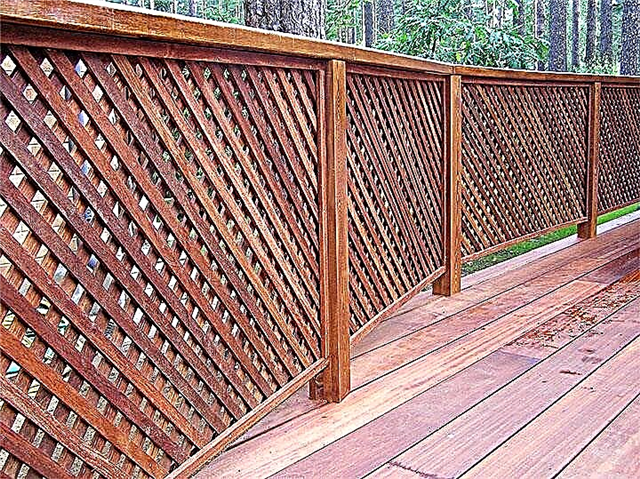
It should be noted that the tree goes well with metal, brick supports, forging, masonry.
Solid or through
In the first version, the boards are mounted tightly to one another, forming a solid wooden wall.

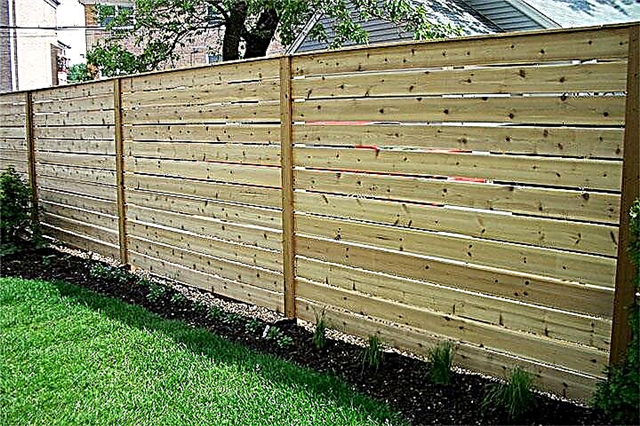
In the second, boards of the same size are attached to the lags with a certain step.
How to find out how much material is needed for the fence
For this, it is important to take into account the type of structure.
For example, in a solid fence, the total length of the fence is multiplied by the height, thickness of the material. Get the number of required cubes of the board.
In the case of the picket fence, the situation is different. First you need to calculate the number of boards per 1 meter of fence. The resulting figure is multiplied by the total length of the fence.
If the result is needed in cubic meters, then the fence area is multiplied by the thickness of one plank.
The design will be more attractive if the width of the gap between the planks is equal to the width of the plank itself.
The recommended raw materials for the picket fence are boards with dimensions of 2 * 10 * 300 cm, veins - 10 * 2.5 cm. It is better to erect columns from a bar with a cross section of 5 * 5, 5 * 7.5, 7 * 7.5 cm.
 Scheme of installation of the fence from the board to the posts from the metal profile
Scheme of installation of the fence from the board to the posts from the metal profile
Do-it-yourself recommendations
The generally accepted fence height ranges from 1.5 to 2.5 m.
With an independent construction of the fence, it is worth considering several subtleties:
- Vertical columns are installed in increments of 2.5-3 m.
- The evenness of the attached elements must be checked by level.
- To increase the reference area and improve the rigidity of the structure, special shoes are attached to the supports.
- All wood before assembly needs to be pretreated with antiseptics, flame retardants and other protective agents.
- Only carefully dried raw materials can be painted.
- There are many oil-based paints on sale. They are not recommended to buy, because they quickly crack under the influence of external factors.
- If nails are used for fasteners, it should be taken with a galvanized coating, which is little susceptible to corrosion.
If you want to leave a natural look of a tree, then it is possible to impregnate boards with a stain, wax or varnish.
Photo gallery
In our photo gallery you will find many ways to design wooden fences, which will suit different styles of landscape design.






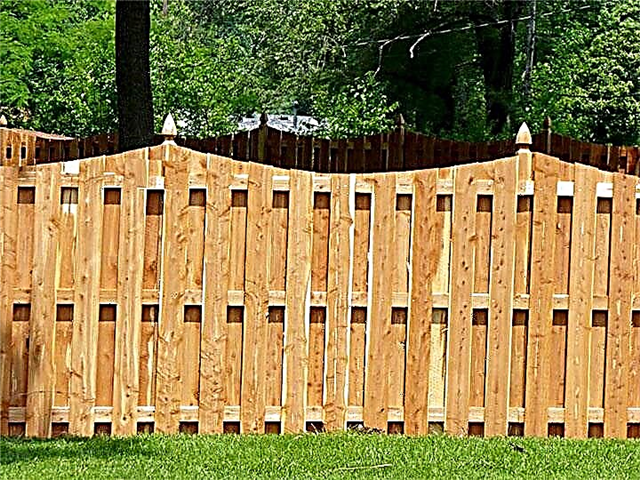


Which option to choose a fence, do it yourself or order an assembly from specialists - you decide. The main thing is that the resulting design becomes a strong defense and decoration of the site.


